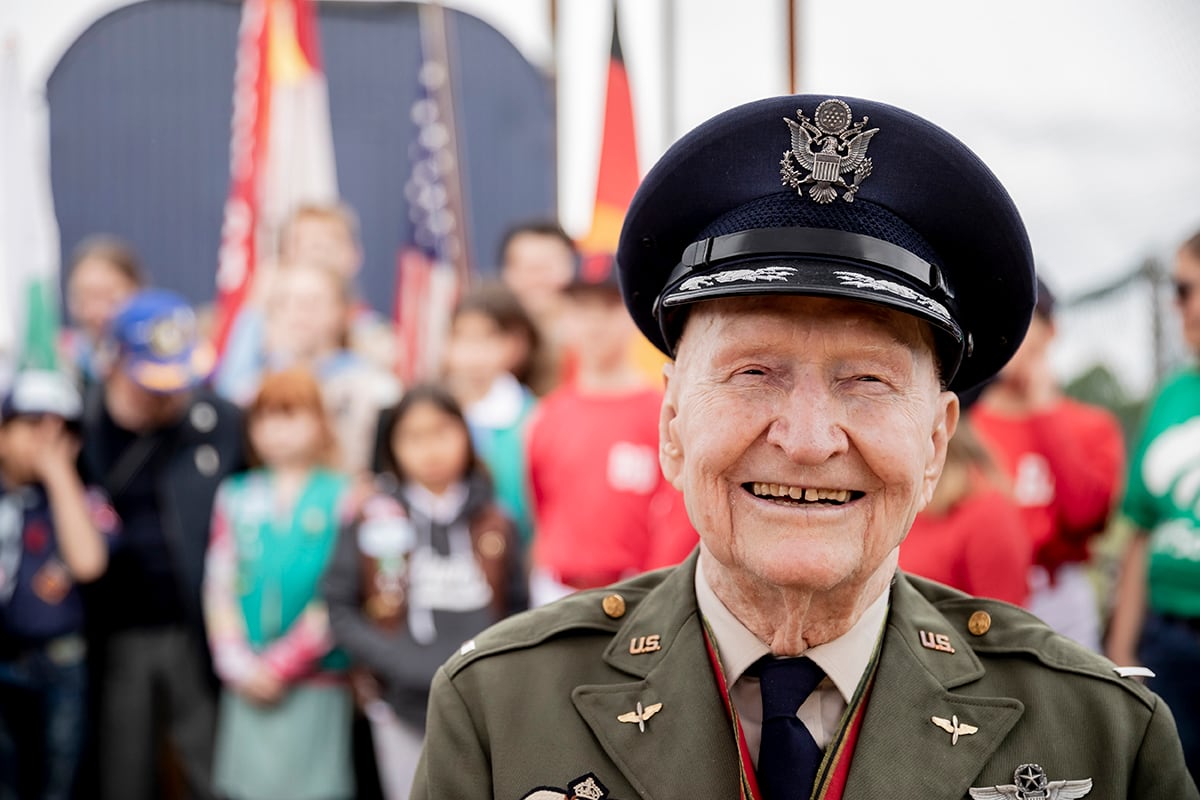BERLIN — Berliners on Sunday celebrated the 70th anniversary of the day the Soviets lifted their blockade strangling West Berlin in the post-World War II years with a big party at the former Tempelhof airport in the German capital.
Among the invited guests of honor was 98-year-old U.S. pilot Gail Halvorsen, who dropped hundreds of boxes of candy on tiny parachutes into West Berlin during the blockade.
Halvorsen came to Berlin from Utah with his two daughters on Friday, the German news agency dpa reported.
On Saturday, a baseball field at Tempelhof airport was named after him — the "Gail S. Halvorsen Park - Home of the Berlin Braves" in honor of his help for Berliners during the Cold War.
Dressed in a military uniform, Halvorsen told Berlin's mayor Michael Mueller that "it's good to be home."
The airlift began on June 26, 1948, in an ambitious plan to feed and supply West Berlin after the Soviets — one of the four occupying powers of a divided Berlin after World War II — blockaded the city in an attempt to squeeze the U.S., Britain and France out of the enclave within Soviet-occupied eastern Germany.
Allied pilots flew a total of 278,000 flights to Berlin, carrying about 2.3 million tons of food, coal, medicine and other supplies.
On the operation's busiest day, April 16, 1949, about 1,400 planes carried in nearly 13,000 tons over 24 hours — an average of one plane touching down almost every minute.
On the ground in Berlin, ex-Luftwaffe mechanics were enlisted to help maintain aircraft, and some 19,000 Berliners, almost half of them women, worked around the clock for three months to build Tegel Airport, providing a crucial relief for the British Gatow and American Tempelhof airfields.
Finally, on May 12, 1949, the Soviets realized the blockade was futile and lifted their barricades. The airlift continued for several more months, however, as a precaution in case the Soviets changed their minds.
Halvorsen is probably the best known of the airlift pilots, thanks to an inadvertent propaganda coup born out of good will. Early in the airlift, he shared two sticks of gum with starving Berlin children and saw others sniffing the wrappers just for a hint of the flavor.
Touched, he told the children to come back the next day, when he would drop them candy, using handkerchiefs as parachutes.
He started doing it regularly, using his own candy ration. Soon other pilots and crews joined in what would be dubbed "Operation Little Vittles."
After an Associated Press story appeared under the headline "Lollipop Bomber Flies Over Berlin," a wave of candy and handkerchief donations followed.
To this day, the airlift still shapes many Germans' views of the Western allies, especially in Berlin. After the Sept. 11 attacks on the U.S. in 2001, some 200,000 Berliners took to the streets of the German capital to show their support for the country that had helped prevent their city falling completely to the Soviets.
On Sunday, up to 50,000 people were expected to participate in the festivities, which include musical performances, talks with witnesses, exhibitions of historical vehicles and lots of activities for children, dpa reported.





